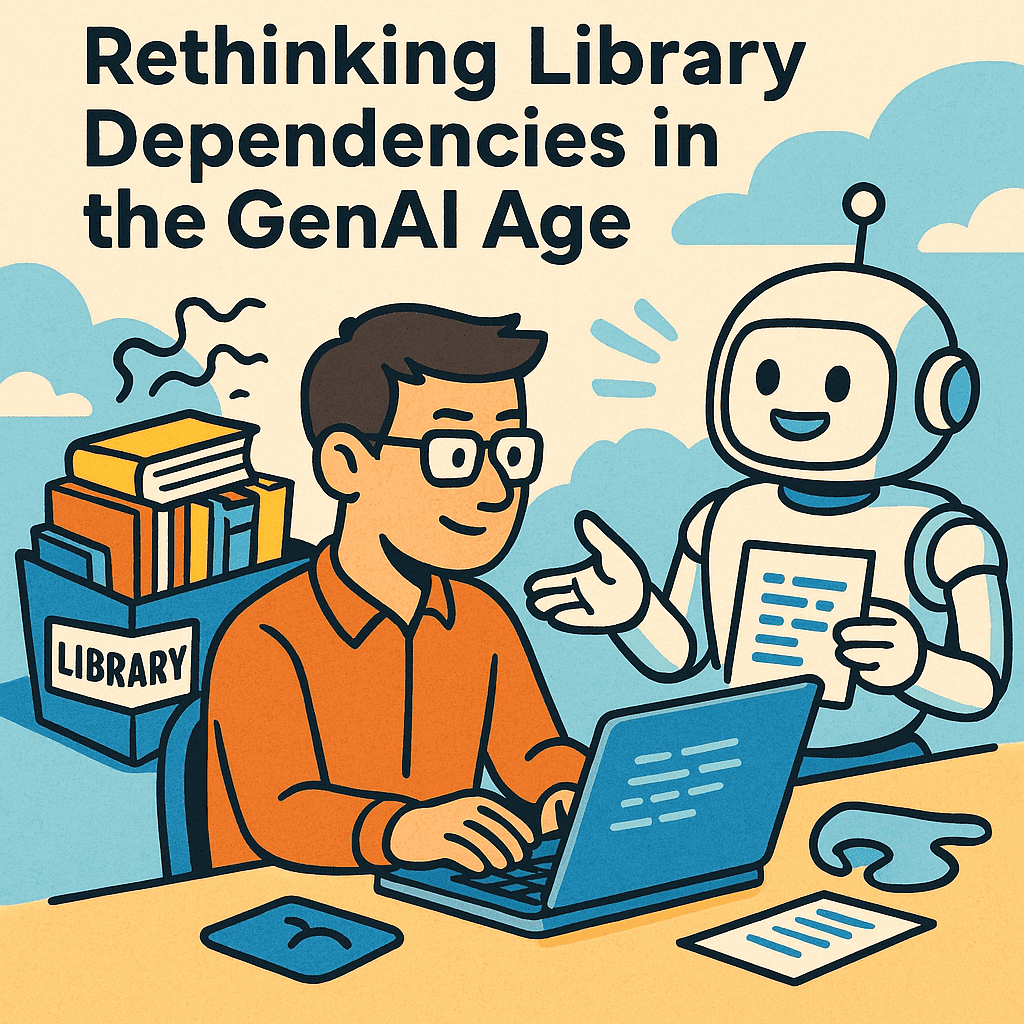
Rethinking Library Dependencies in the GenAI age
Published on in technology , opinion , GenAI , development
The rise of Generative AI (GenAI) is transforming how developers approach common development challenges. One emerging trend is the ability to use GenAI to generate custom, lightweight solutions that reduce the need for incorporating large, feature-rich libraries.
It’s a fairly common dilemma that a developer wants to use a libary to solve a specific issue. For exmaple, with React, I might want a component that enables more complex drop down menu functionality (like a nice inline “select many” UX). However, when looking for good 3rd party libraries, they typically provide every feature imaginable which can cause bloat, both in terms of size of the codebase but also in API and developer documentation.
Advantages to rolling your on AI-powered solution
When a project only requires a subset of features from a comprehensive library, leveraging GenAI to implement the essential functionality can offer significant advantages:
-
Seamless Integration with Project’s Coding Style:
Custom-tailored code adheres to your team’s conventions and paradigms, ensuring consistency across the codebase. -
Minimized External Dependencies:
By only implementing what’s truly necessary, you reduce the risk of version incompatibilities and the overhead of maintaining multiple dependencies. This approach addresses issues like API changes or mismatches between major library versions (for instance, differences in framework or language specifications). -
Enhanced Security and Maintainability:
Writing code in-house means you have full visibility into how it works, reducing dependency on third-party libraries that might not be as thoroughly audited or could potentially introduce vulnerabilities. With GenAI assisting in generating a baseline, you benefit from speed without sacrificing control.
But there are tradeoffs
That being said, there are trade-offs to consider:
-
Time and Resource Investment:
Crafting your own solution — even one powered by GenAI — demands additional upfront investment in time and resources. You might need to write tests, handle edge cases, and plan for complex user interactions that mature libraries have already ironed out. -
Reinventing the Wheel:
There’s a risk of reimplementing functionality that is already robustly handled by existing packages, if you’re not careful. Maybe the all-encompassing library provides all those features for a reason.
Hybrid approach
To strike a balance, consider a hybrid approach:
-
Start with GenAI-generated Code:
Leverage GenAI to create a lean, baseline implementation of the functionality you need. -
Refine and Integrate Selectively:
Feed in libaries relevant source code/documentation to set context for the LLM while discarding or reworking portions that add unnecessary complexity or bloat. -
Tailor for Maintainability:
Customize the generated code to blend seamlessly with the existing codebase, adopt your team’s best practices, and ensure quality through comprehensive testing.
This balanced strategy enables software developers to harness the benefits of external expertise while keeping their applications lightweight, secure, and maintainable. GenAI doesn’t completely replace the need for libraries; rather, it offers a dynamic tool that can help you pick and choose the best parts while filling in the gaps with customized, purpose-built solutions.
It’s worth noting that the viability of this approach also depends on the capabilities of the GenAI model being used. If the model struggles to accurately generate or understand the syntax and features of a specific library, it may not be a suitable replacement. Developers should carefully evaluate the performance of the GenAI model in the context of their project’s requirements before adopting this workflow.
Said again, the emergence of GenAI is not a silver bullet that will eliminate the need for libraries, but rather a powerful enabler that can reduce dependency fatigue and enhance development agility. By striking a balance between external expertise and custom-tailored solutions, software teams can create applications that are lightweight, secure, and aligned with their unique needs.